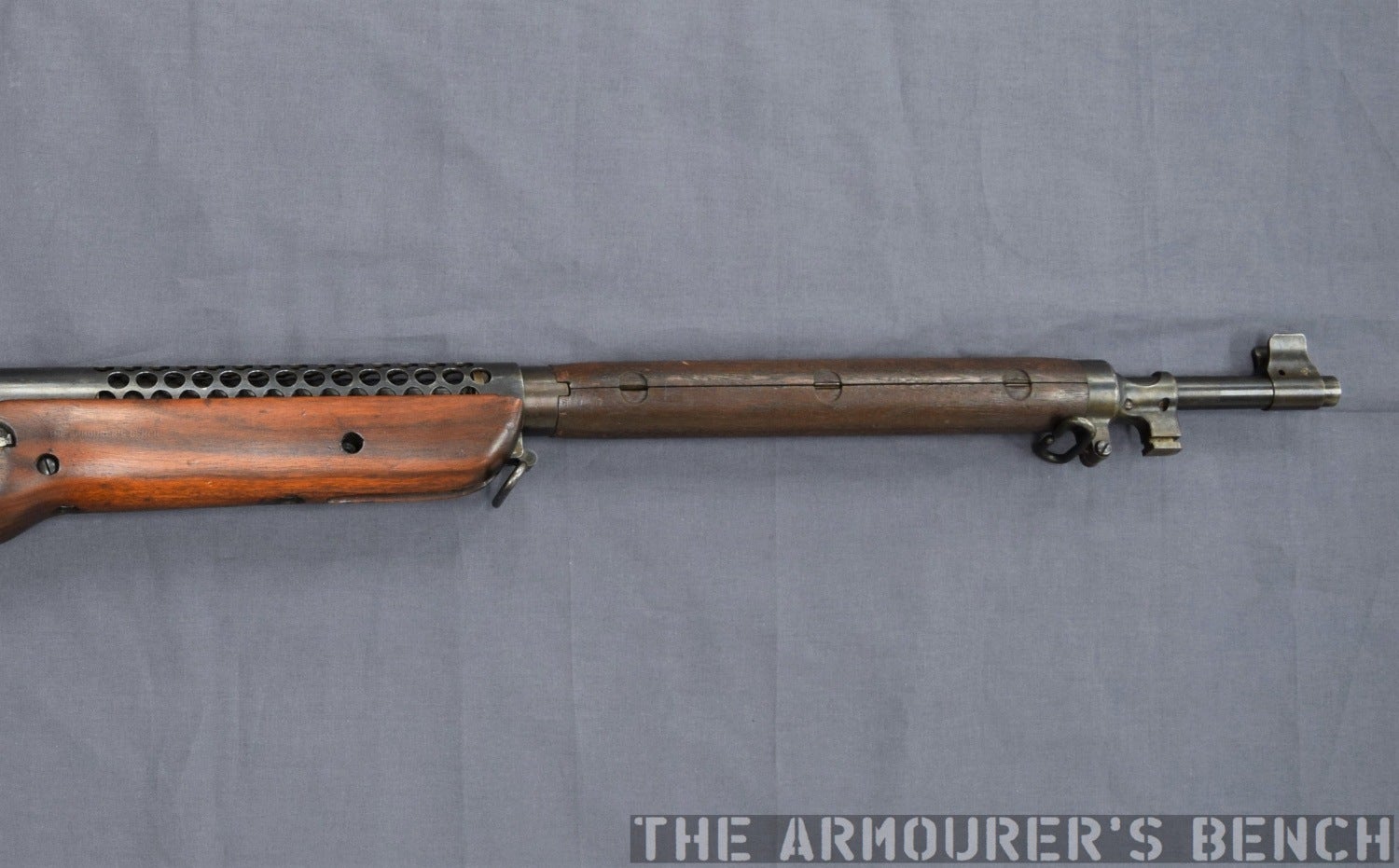The Johnson rifle has one of the most recognisable profiles of any World War Two rifle. It’s undoubtedly one of the 20th century’s most interesting military rifles, in terms of both design and history. I recently had the chance to take a look at an early production example, part of the Cody Firearms Museum‘s amazing collection. Serial number R-14, Johnson’s military rifles were initially designated the Type R – for rotary magazine, has an extremely rare optional extra that you never see on later production Johnson rifles.
The Johnson is typically seen with an exposed barrel, but R-14 has a round, two-piece wooden handguard capped off by a nosecap with a bayonet lug and sling swivel. This early optional extra wouldn’t be seen on the later production Johnson M1941. 

A Johnson M1941 (Courtesy of Rock Island Auction Company)
The rifle was developed by Melvin Johnson, a USMC Reserve Captain, in the mid-1930s. His rifle was given some cursory testing in 1938-39 but US Army Ordnance showed little interest. Johnson lobbied politicians leading to a bill being introduced in an effort to have Johnson’s rifle adopted. In May 1940, the US Senate’s Military Affairs Committee met with Johnson and military representatives to discuss the rifle, however, this bid failed and the M1 Garand’s introduction continued.

A closer look at the handguard. The bayonet lug appears to be designed to mount a US Army M1905 bayonet, the sword bayonet issued with the M1903 Springfield (Matthew Moss)
The handguard appears to have been an attempt to address one of the main concerns raised by the US military – the Johnson’s unsuitability for bayonet fighting. The rifle uses a short-recoil operated action – so the barrel recoils about ½ inch on firing, this means that the weapon’s barrel isn’t actually fixed in place, meaning when the bayonet was used the barrel moved backwards ½ inch when it contacted something or someone. In one report US Army Ordnance actually noted that “this rifle is very poorly suited to bayonet fighting.” The exposed barrel was too narrow to grasp properly and was also uninsulated. The non-fixed, recoiling barrel was also highlighted as another ‘deficiency’.
Check out the video I put together on the gun below:
Johnson refuted these concerns by stating that the barrel was exposed with good reason – so that it could cool rapidly, suggesting that enclosed barrels like the Garand’s became too hot to grasp after sustained firing thus also making bayonet fighting difficult regardless. Despite this is, at least initially, a handguard was offered. You would think that a fixed, full-length stock with the barrel recoiling inside would have been a better solution but this would have required some redesign work and Johnson was passionate about having the exposed barrel to allow cooling.

Left side view of the Johnson with its optional forend (Matthew Moss)
The addition of the handguard would no doubt have made bayonet fighting easier but the extra weight (at least 2lbs) it added would definitely have affected the cycling of the gun. Logic would suggest that any weight added to the barrel would slow its travel and potentially cause reliability issues. It is worth noting that the bayonet issued with the M1941 was a lightweight spike-type, developed in order to alleviate potential issues with cycling while the bayonet was fixed. When the Johnson finally entered production it was with an exposed barrel as he intended and R-14 remains one of the few examples to have the Johnson’s optional handguard.
Many thanks to the Cody Firearms Museum, at the Buffalo Bill Center of the West, in Cody, Wyoming for allowing me to take a look at the rifle!
 Your Privacy Choices
Your Privacy Choices
